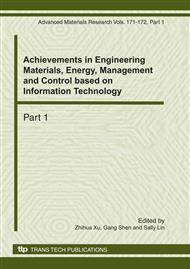p.454
p.458
p.462
p.468
p.473
p.477
p.481
p.486
p.490
Out-of-Step Disconnection Scheme Based on Fuzzy Math
Abstract:
In the power system, out-of-step disconnection is the final defensive line of protection, requiring high reliability. This paper analyzed the physical meaning of out-of-step and the principles of disconnection to study the applicability of each discrimination method. It analyzed characteristics and variations of some parameters while oscillation or out-of-step, including impedance, frequency, cosine voltage, etc. It created relevant fuzzy functions and fuzzy rules with trapezoidal membership function based on the given characteristics and variations. Then a comprehensive out-of-step algorithm is achieved by integrating fuzzy functions together with given fuzzy rules. The output is defuzzied to be the final result with barycenter method to make decisions. This algorithm is tested to be more generic.
Info:
Periodical:
Pages:
473-476
Citation:
Online since:
December 2010
Authors:
Keywords:
Price:
Сopyright:
© 2011 Trans Tech Publications Ltd. All Rights Reserved
Share:
Citation:


